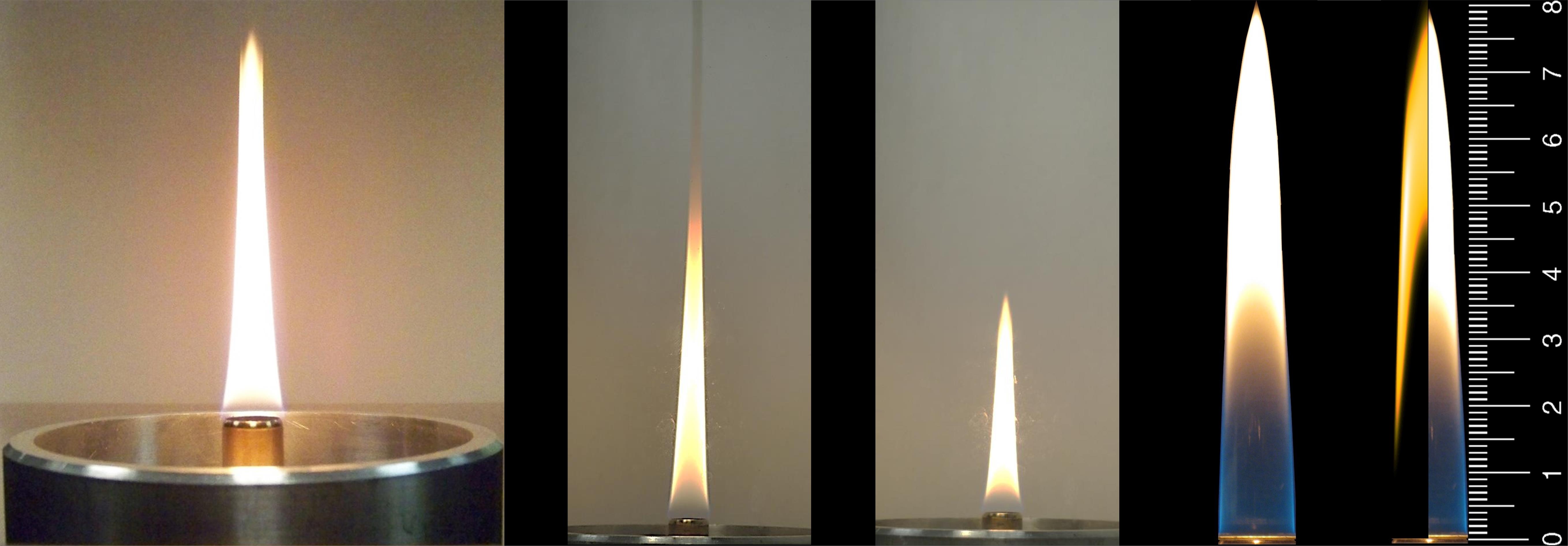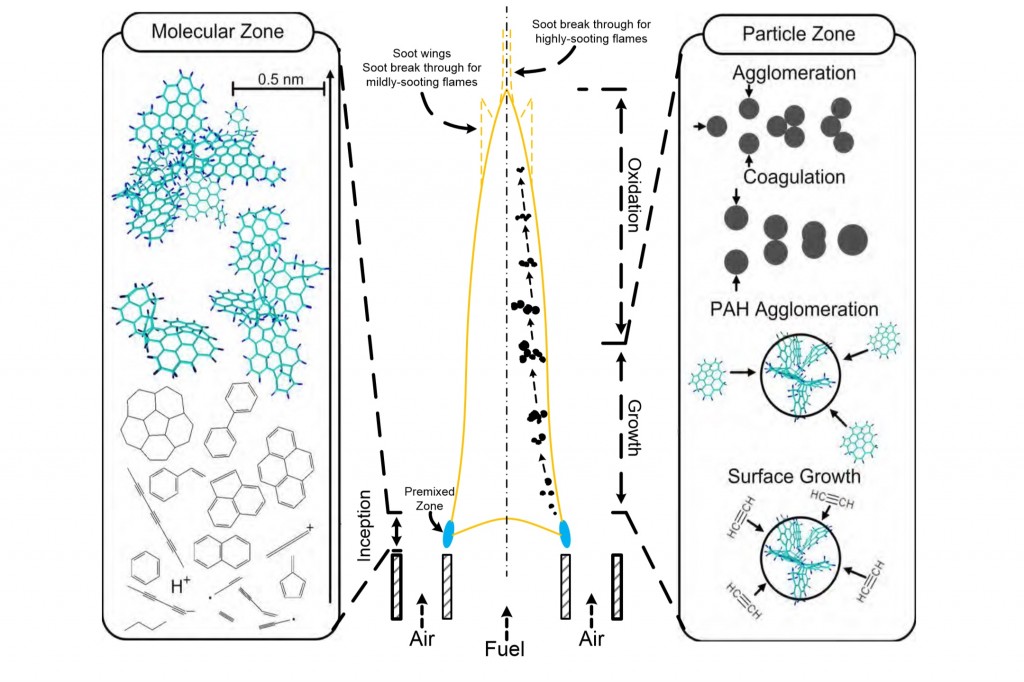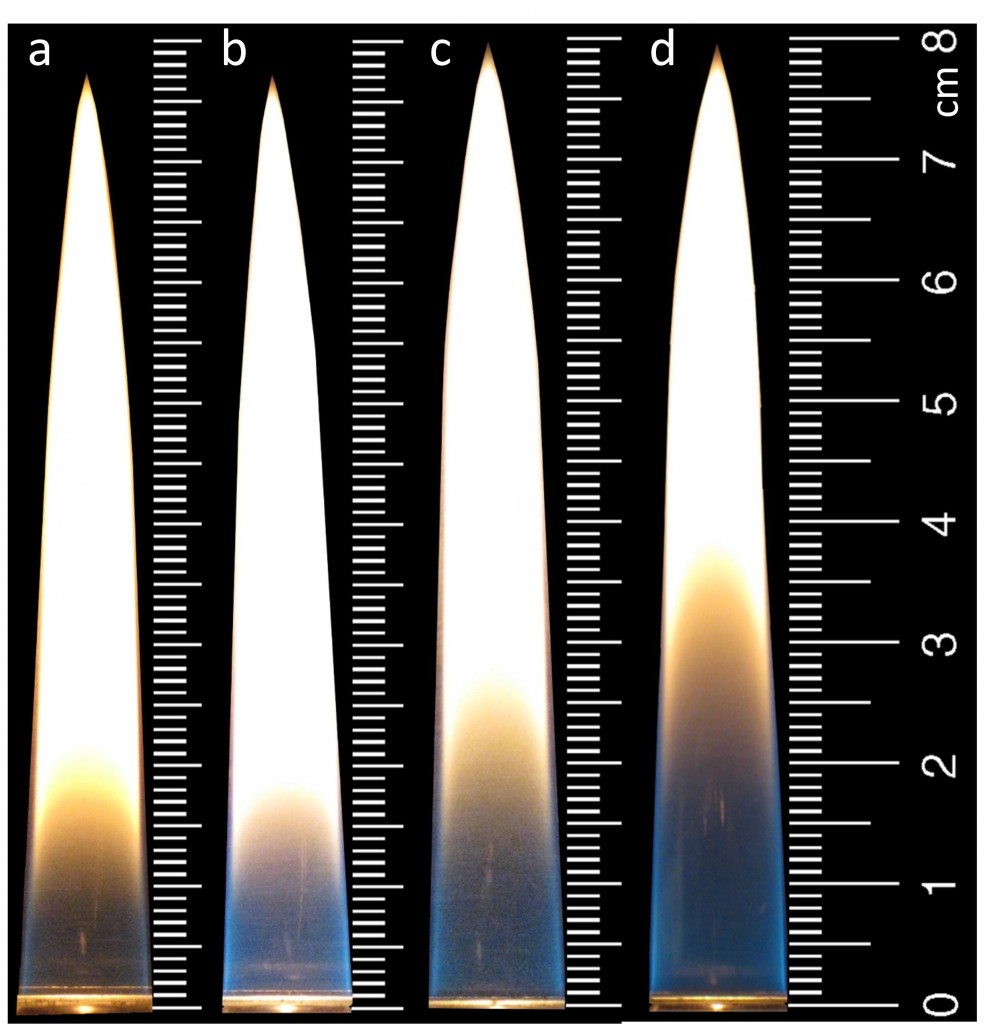
sooting and non sooting ethylene coflow flames, a biodiesel surrogate flame compared to the numerical results for soot volume fraction
Soot formation consists of complex and concurrent processes which are not completely understood yet. Experimental study of soot formation is required for model validation and also for testing new hypothesis about the effects of different flow parameters such as temperature and fuel composition on soot formation. The soot experimental group has two main goals: 1. provide high quality data for model validation ,and 2. use different diagnostic techniques to investigate different processes of soot formation.
We use several experimental techniques to measure soot concentrations, flame and soot temperature and size/size distributions of soot particles in laminar coflow diffusion flames of the target fuels. The advantage of using several techniques to measure a single property of a flame is that by using different experimental techniques we can understand the strengths and weaknesses of each method and this knowledge helps us to better validate the models and also to better understand soot formation. We use the following techniques in our group:

A schematic of soot formation in a Coflow diffusion flame taken from the PhD thesis of Dr. Ahmet E. Karatas, University of Toronto




